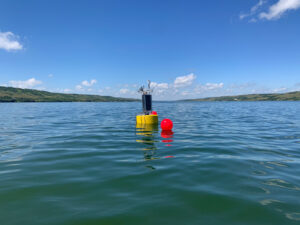LI-COR LI-190R PAR Sensors
Features
- Improved weather resistance and durability in long-term outdoor deployments
- Uniform sensitivity to light that drives photosynthesis
- Removable sensor simplifies installation and removal of the sensor
- Free ground shipping
- Expedited repair and warranty service
- Lifetime technical support
- More
Overview
The LI‑190R uses a high-quality silicon photodiode and glass optical filters to create uniform sensitivity to light between 400 nm to 700 nm, which closely corresponds to light used by most plants. Precision optical filters block light with wavelengths beyond 700 nm, which is critical for measurements under vegetation where the ratio of infrared to visible light may be high.
Applications
Excellent cosine response provides accuracy at low solar angles. This, in combination with high resolution at low light levels, makes the LI-190R useful for determining the light compensation point in plants.
- Absolute Calibration: ± 5% traceable to the U.S. National Institute of Standards and Technology (NIST)
- Sensitivity: Typically 5 μA to 10 μA per 1,000 μmol s-1 m-2
- Linearity: Maximum deviation of 1% up to 10,000 μmol s-1 m-2
- Response Time: Less than 1μs (2 m cable terminated into a 604 Ohm load)
- Temperature Dependence: ± 0.15% per °C maximum
- Cosine Correction: Cosine corrected up to 82° angle of incidence
- Azimuth: < ± 1% error over 360° at a 45° elevation
- Tilt: No error induced from orientation
- Detector: High stability silicon photovoltaic detector (blue enhanced)
- Sensor Housing: Weatherproof anodized aluminum body with acrylic diffuser and stainless steel hardware; O-ring seal on the sensor base
- Size: 2.36 cm diameter × 3.63 cm (0.93” × 1.43”)
- Weight: 24 g head; 60 g base/cable (2 m) with screws
- Cable Length: 2 m, 5 m, 15 m, 50 m (6.5’, 16.4’, 49.2’, 164’)
In The News
Regional Lake Monitoring in Maine: Community Funded Research and Protection
Lakes everywhere are threatened by climate change, harmful algal blooms , invasive species, and other environmental stressors. Local, regional, and federal agencies have stepped up in order to defend the environment and water resources. The Lakes Environmental Association (LEA) in Maine is one example of an organization dedicated to protecting local freshwater resources. Dr. Ben Peierls, LEA Research Director, explains the history of the nonprofit, "For more than 50 years, [LEA] has been working locally, statewide, and regionally, helping or interacting with people on lake water quality, watershed protection, conservation, education, invasive species, and other issues.
Read MoreCombating Water Insecurity in Saskatchewan with Real-Time Data
The prairies of Saskatchewan can be described as one of the least water-secure parts of Canada, making water quality monitoring essential for informed resource management in a region already facing water insecurity. While natural physical properties worsen some of the poor water quality conditions in the region, others are connected to land use. Having grown up spending summers on the shores of Lake Huron, Helen Baulch, an associate professor at the School of Environment and Sustainability at the University of Saskatchewan , has always been dedicated to the protection of water resources. Looking back fondly at her childhood playing along the shore, Baulch also recalls the invasion of quagga mussels during her teenage years and watching the lake change as a result.
Read MoreThin Ice: Year-Long Monitoring in Missouri Reservoirs
The value of multi-lake studies is well understood by international organizations like the Global Lake Ecological Observatory Network (GLEON) and the scientists who work tirelessly to provide data to the larger network. Rebecca North, an associate professor at the University of Missouri-Columbia , is one of many researchers involved in multi-lake research initiatives and conducting research locally in her home state. Having been born and raised on the shore of Lake Ontario, North grew up in a community that revolved around water. She also saw firsthand one of the worst water quality bodies of the world, the Bay of Quinte, decline throughout her lifetime.
Read More

































